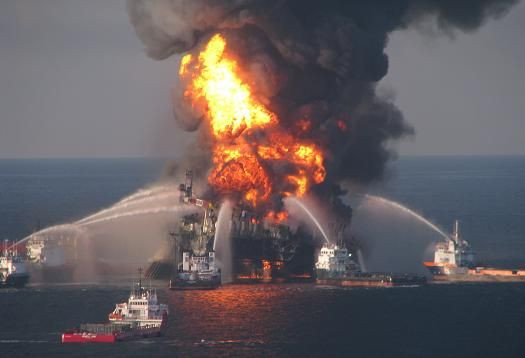Halliburton Pleads Guilty To Destroying Evidence Related To The 2010 Deepwater Horizon Disaster

Halliburton Energy Services agreed to plead guilty and pay the maximum fine for destroying evidence in connection with the 2010 Deepwater Horizon explosion in the Gulf of Mexico, which led to one of the largest oil spill disasters in U.S. history.
In addition to agreeing to pay a $200,000 fine, Halliburton Company (NYSE:HAL, the world's second-largest energy-services company, accepted three years of probation for its guilty plea to one misdemeanor count of destruction of evidence, the U.S. Justice Department said.
The settlement, which was filed Thursday in U.S. District Court in New Orleans, is subject to court approval. This is the third corporate guilty plea over the April 20, 2010 disaster in the Macondo Prospect in the Gulf of Mexico.
In a statement, Halliburton said that its plea agreement concludes the U.S. investigation into the company's involvement in the disaster.
“The Department of Justice has agreed that it will not pursue further criminal prosecution of the company or its subsidiaries for any conduct relating to or arising out of the Macondo well incident,” Halliburton said in the statement.
“The Department of Justice acknowledged the company’s significant and valuable cooperation during the course of its investigation, and the company has agreed to continue to cooperate with the Department of Justice in any ongoing investigation related to or arising from the incident.”
Separately, the Houston-based company said it voluntarily contributed $55 million to the National Fish and Wildlife Foundation. The gift wasn't part of conditions for the court’s acceptance of the company's plea agreement, the Justice Department said.
The Deepwater Horizon rig, designed and built by Halliburton’s energy-services subsidiary, was owned and operated by exploration company Transocean Ltd. (NYSE:RID), under contract to BP PLC (NYSE:BP) at the time of the disaster, which was caused by an uncontrolled blowout that led to explosions and a fire, killing 11 rig workers. Both Transocean and BP reached earlier settlements, though BP still faces possible damages of up to $17.6 billion in separate proceedings under the Clean Water Act.
Halliburton conducted an internal review in May 2010 to determine the cause, including whether the number of centralizers -- protruding metal collars that help keep the well pipe away from the surrounding walls as it is lowered and placed in the well -- could have contributed to the blowout.
Halliburton said it had recommended that BP use 21 centralizers but found that BP opted to use only six. Halliburton said it ran computer simulations to compare the effect of using six instead of 21 centralizers, but the simulations suggested there was “little difference” between the two scenarios. The staff that ran the simulations were directed by unidentified individuals to destroy the results, according to the Justice Department.
In June 2010, Halliburton ran another set of simulations to compare the same scenarios, only to reach its earlier conclusion. The company's employees were again directed to “get rid of” the results, the Justice Department said.
The Justice Department said its Deepwater Horizon Task Force was unable to forensically recover the destroyed evidence.
© Copyright IBTimes 2024. All rights reserved.






















